News
26-03-2025
Smart Meters and Sensor Installation in the Water Supply System
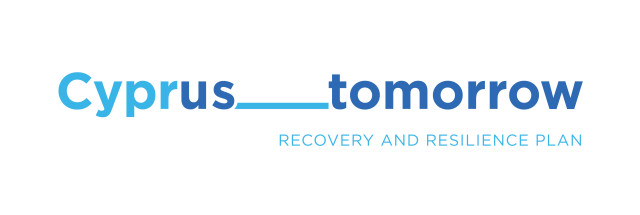
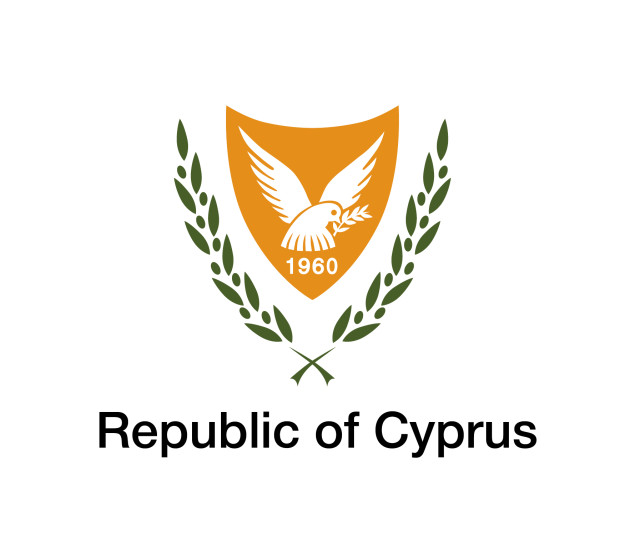


Τhe project is funded by the Recovery and Resilience Facilicy (RRF) of the European Union (Next Generation EU), within the framework of the implementation of the Recovery and Resilience Plan.
Progress of Works
The installation of smart water meters in Limassol continues dynamically and at a rapid pace!
To date, over 40,000 smart meters have been installed, bringing our city closer to a modern and sustainable water supply network.
During the month of October, installations are taking place in the areas highlighted in light blue on the map:
-
Agia Fyla area
-
Panthea area
-
A small part of Agios Athanasios (Michalis Pitsillides, Achilleas Limbourides, Panikkos Charakis, Thespesias, and Eleas streets)
Through the Limassol Smart Water Network – Living Lab project, our city is gaining a modern, “smart” water supply network that offers:
✅ more accurate consumption tracking
✅ early leak detection
✅ better water management for everyone
The project is funded by the Recovery and Resilience Plan of Cyprus under the European Union’s Next Generation EU initiative.
Find all the information about the Limassol Smart Water Network – Living Lab project here: https://eoalemesos.org.cy/en/european-programmes
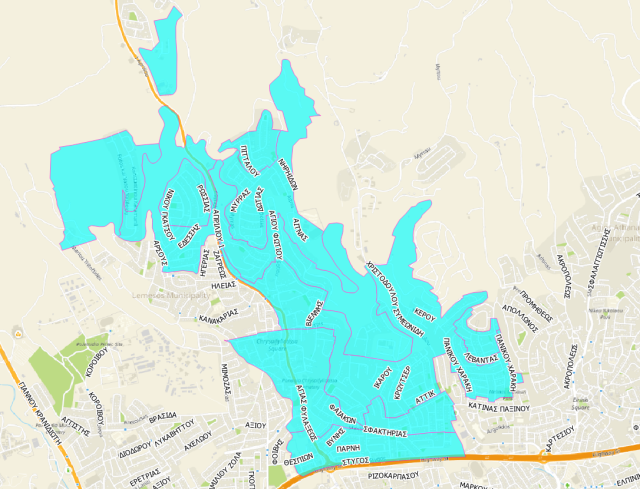
October 10, 2025
Limassol District Local Government Organisation
--------------------------------------------------------------------------------------------------------------------------
The installation of smart water meters has been extended to DMA 937 and will soon be implemented in DMAs 231 and 232 (the shaded areas on the attached map).
DMA 937 (Columbia area) is bounded by the Intercity Road to the east and north, Dodekanisou Street – Municipality of Amathounta to the west, and Spyrou Kyprianou Avenue – Municipality of Amathounta to the south.
DMA 231 is the area enclosed by Agiou Athanasiou Avenue to the east, Spyrou Kyprianou Avenue to the north, Archbishop Makarios III Avenue (Mesa Geitonia) to the west, and the streets Valtetsiou, Picasso, Andrea Zappa, Aristomenous, and Agios Panteleimonas to the south.
DMA 232 is bounded by Agiou Athanasiou Avenue to the east, the Intercity Road to the north, Archbishop Makarios III Avenue (Mesa Geitonia) to the west, and Spyrou Kyprianou Avenue to the south.
May 22, 2025
Limassol District Local Government Organisation
--------------------------------------------------------------------------------------------------------------------------
Progress of Works
The replacement of water meters is currently underway in two areas simultaneously (DMA 137 and DMA 138) within the Municipality of Amathounta, specifically in the municipal district of Germasogeia, as shown on the map.
The boundaries of each area are as follows:
DMA 137 Area
East: Christaki Kranou Street
South: Vasileos Georgiou I Coastal Avenue
West: Marathonos Street, Takis Christodoulou Street, Chalkidikis Street
North: Spyrou Kyprianou Avenue (from the Linopetra Medical Center to the Germasogeia roundabout)
DMA 138 Area
East: Ariadnis Street
South: Vasileos Georgiou I Coastal Avenue
West: Christaki Kranou Street
North: Intercity Road
The transition to a smart water network, which will efficiently and promptly manage the water supply system and enhance its quality and resilience, is now a reality.
The Limassol Water Board has launched the Limassol Smart Water Network – Living Lab project, which is funded by the European Union’s Cyprus Recovery and Resilience Plan (Next Generation EU) with a budget of thirteen million euros.
March 27, 2025
Limassol District Local Government Organisation
--------------------------------------------------------------------------------------------------------------------------
The Limassol District Local Government Organisation (EOA Lemesos) has secured funding of €13,000,000 from the European Union’s and the Republic of Cyprus’ Recovery and Resilience Plan for the implementation of the Limassol Smart Water Network-Living Lab project.
Project Scope
The project includes:
- Replacement of 80,000 water meters with ‘smart’ meters – funding: €12,000,000.
- Installation of 200 pressure sensors and 80 water quality sensors (20 multi-parameter sensors and 60 free residual chlorine sensors) in the water supply network – funding: €600,000.
- Control Room – funding: €50,000.
- Development of a Digital Twin and ‘smart’ algorithms for the efficient management of the water supply network – funding: €350,000.
Smart Water Meters
A public tender for the replacement of 80,000 water meters with ‘smart’ meters was awarded to NewCytech Business Solutions Ltd.
The project commenced in August 2024 with a pilot installation of a small number of smart meters to test processes and set up the measurement data infrastructure.
Smart water meters will contribute to:
- Water conservation,
- Water loss reduction,
- Immediate consumer updates on water consumption at their premises,
- Reducing high bills caused by water loss within premises,
- Improved management of the water supply network,
- Faster detection of leaks and faults in the network,
- Enhanced service provided by the EOA Limassol.
The smart meters consist of conventional water meters fitted with a special communication device:
- which detects the rotation of the meter’s register indicators and translates this into water consumption. The consumption data is stored in the device's memory and transmitted daily to the measurement data infrastructure.
- which is programmed to send alarms in cases of:
- Unusually high water consumption
- Unusually low water consumption
- Water leakage
- Interruption in consumption (stopped meter)
- Tampering with the meter
- Negative water consumption (reverse meter movement)
The smart meters will transmit daily recorded measurements to the measurement collection and processing infrastructure (specialised software), where the data will be archived and made available to various departments and systems of the organisation. This will enable further analysis and more efficient management of the water supply network.
Conventional water meter
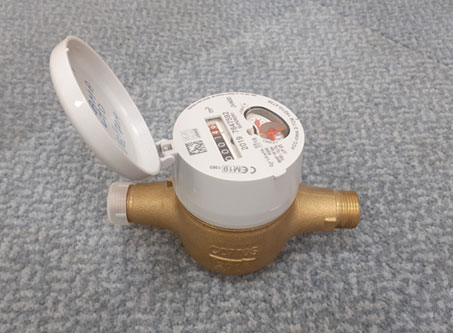
Smart water meter + Measurement collection
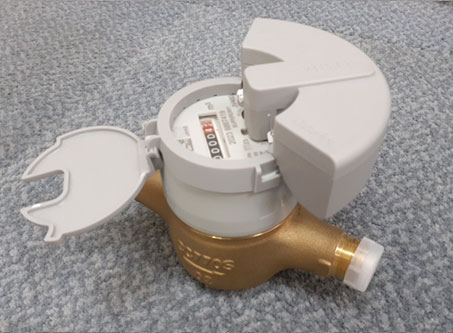
Pressure and Water Quality Sensors
A contract has been awarded through an open tender to the company METRICA Precision Measuring Systems S.A. for the supply and installation of 200 pressure sensors and 80 water quality sensors (including 20 multi-parameter sensors and 60 free chlorine residual sensors) in the water supply network.
The project commenced in March 2024.
So far, 20 multi-parameter sensors have been installed at selected inlet or outlet points of reservoirs. Additionally, 6 free chlorine residual sensors and 17 pressure sensors have also been installed.
Multi-Parameter Water Quality Sensors
The term ‘multi-parameter water quality sensors’ refers to a set of sensors that simultaneously monitor multiple chemical parameters of water quality. In this project, the selected parameters for simultaneous monitoring include: Conductivity, Free chlorine residual pH, turbitidy, and temperature. These are key indicators of water quality.
The multi-parameter sensors have been installed at selected inlet or outlet points of central reservoirs or specific locations within the water supply network (20 locations).
Each Multi-Parameter Sensor Installation Includes:
- An outdoor metal kiosk or an indoor metal box,
- A pump or a pressure-reducing valve (PRV),
- A complete set of four sensors (conductivity, free chlorine residual, pH, and turbidity),
- A telemetry device,
- All necessary tubing and cables.
Data from the sensors is transmitted every 5 minutes to the Organisation's Telemetry Platform.

Multi-parameter kiosk
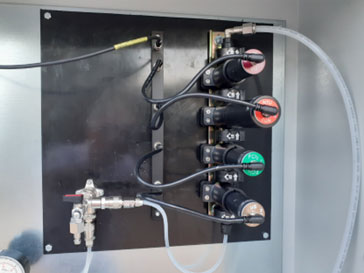
Set of 4 sensors (conductivity, free chlorine residual, pH, and turbidity)
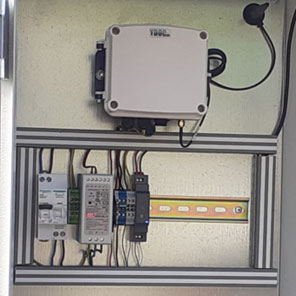
Telemetry device
Free Chlorine Residual Sensors
Free chlorine residual sensors measure the chlorine remaining in the water after disinfection. This is a key indicator of water quality and the proper functioning of disinfection systems.
A total of 60 free chlorine residual sensors will be installed at selected locations within the water supply network, including at the entry points of sealed District Metered Areas (DMAs), and at the outlet points of reservoirs.
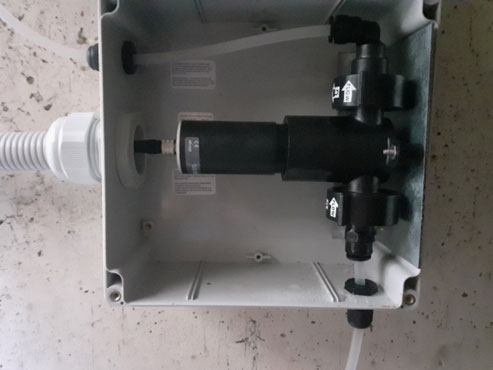
Free chlorine residual sensor
Each free chlorine residual sensor installation includes:
- Data from the sensors is transmitted every 5 minutes to the Organisation's Telemetry Platform.
- An outdoor plastic enclosure,
- A pressure-reducing valve (PRV),
- A complete single-sensor unit,
- A telemetry device,
- All necessary tubing and cables.
Pressure Sensors
Pressure sensors will be installed at various points throughout the network. They will continuously monitor network pressure in each District Metered Area (DMA)—a defined network area with a single water entry point. These pressure measurements will contribute to the accurate operation of the hydraulic models of the network, as well as the proper functioning of the Digital Twin and smart algorithms for the efficient management of the water supply system.
A total of 200 pressure sensors will be installed in the water supply network, with 2 to 6 sensors per DMA.
Each Pressure Sensor Installation Includes:
- Excavation to locate the water pipeline,
- Installation of a “saddle” and a connection pipe leading to the pavement surface (the end of the pipe is housed in a small plastic box with a metal cover on the pavement),
- Restoration of the excavation,
- Installation of a small plastic box with a metal cover to house the pressure sensor,
- Concrete base installation for the telemetry station’s metal pole,
- Restoration of the pavement to its original condition,
- Installation of the pressure sensor inside the small plastic box,
- Installation and programming of the telemetry station, which includes an electronic data recording and communication device, a solar panel, a battery.
Data from the pressure sensors is transmitted every 5 minutes to the Organisation's Telemetry Platform.
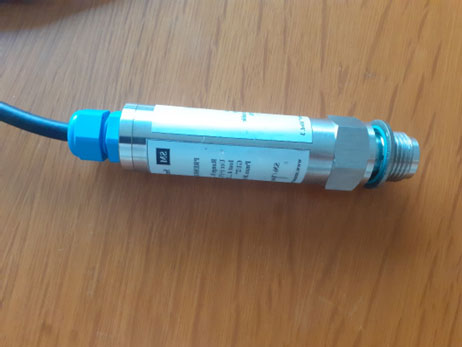
Pressure sensor
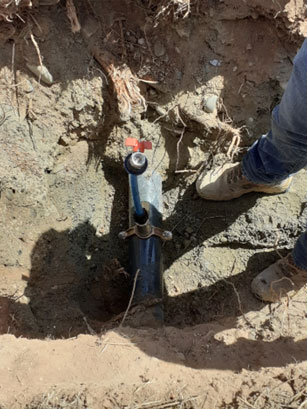
Excavation to locate the water pipeline, and installation of a “saddle” and connection pipe.

Installation of a concrete base for the metal pole of the telemetry station.
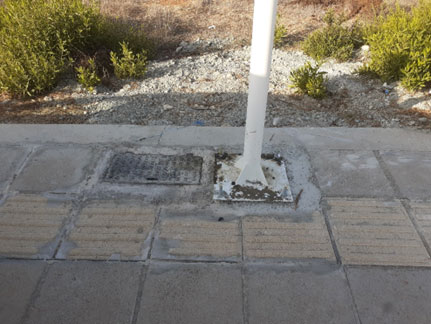
Pavement restoration to its original condition.
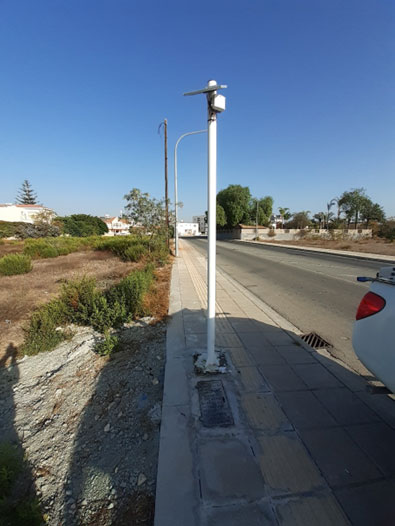
Installation of the telemetry station on the pole
(including the electronic data recording and communication device, solar panel, and battery).
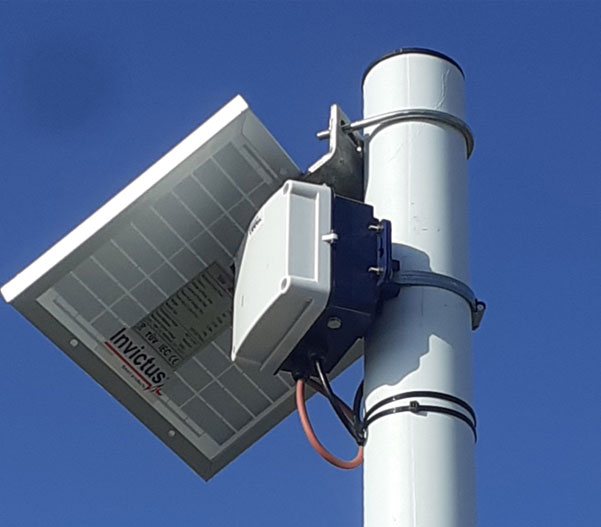
Installation of the telemetry station on the pole
(including the electronic recording and communication device, solar panel, and battery).
PROJECT DETAILS
More specifically, the project falls under:
- Priority Axis 2: "Rapid Transition to a Green Economy",
- Special Objective 2.3: "Smart and Sustainable Water Resource Management".
Policy Objective:
The project aims to significantly contribute to the green transition and environmental sustainability by supporting national targets for climate neutrality, energy efficiency, and renewable energy sources. It promotes reforms in the fields of climate and energy, sustainable transport, water resource management, and the environment in general.
Find all project-related information on the website of the Cyprus Recovery and Resilience Plan – Communication Strategy and Implementation Plan for Publicity Actions | Cyprus Tomorrow.